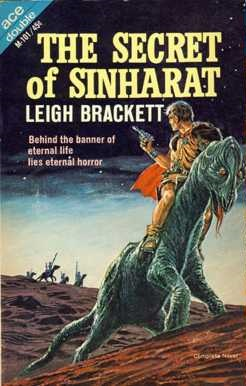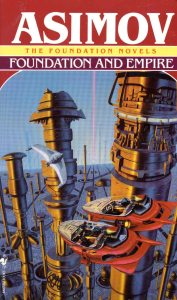So, I finally started watching Andor and it’s as neat as I’d heard. It’s Star Wars as a taut cyberpunk heist, compelingly acted and with enough of a distinct vibe to feel more satisfying than the endless retread of the same stock characters and plotlines that the franchise has been delivering on the big screen. It also engages with fascism and anti-colonialism in a more thoughtful way than any of those films (or the latest Dune), even including – thematically appropriate, if politically tasteless – nods to The Battle of Algiers. Technically, this is a prequel to Rogue One (an enjoyable, if messy, picture whose controversies I touched on at the time) but, from what I’ve watched so far, there’s no need to have seen it (or any other SW movies, for that matter) to appreciate Andor.
Honestly, it’s nice to see Star Wars pillaging from new places. The original trilogy’s pedigree included not only American adventure movies – swashbucklers, westerns, war stories, and even hard science fiction like 1950’s Destination Moon – but also a number of foreign influences, from French comics (Valérian and Laureline) to Kurosawa’s samurai epics (especially the gorgeous-but-goofy The Hidden Fortress), not to mention Nazi propaganda (Triumph of the Will being a recurrent visual reference). George Lucas brought further influences for the prequels, such as peplums and political thrillers. In Attack of the Clones, it’s hard to miss the echoes of The Fifth Element (the high-speed chase among the flying cars) and Chaplin’s Modern Times (the slapstick sequence at the assembly line).
But it wasn’t just cinema and comics… There’s also plenty of literature in Star Wars’ family tree. Today, I want to highlight two books that should fit into that genealogy:
THE SECRET OF SINHARAT
(Leigh Brackett, 1964)
“For hours the hard-pressed beast had fled across the Martian desert with its rider. Now it was spent. It faltered and broke stride, and when the rider cursed and dug his heels into the scaly sides, the brute only turned its head and hissed at him. It stumbled on a few more paces into the lee of a sandhill, and there it stopped, crouching down in the dust.
The man dismounted. The creature’s eyes burned like green lamps in the light of the little moons, and he knew that it was no use trying to urge it on. He looked back the way he had come.
In the distance there were four black shadows grouped together in the barren emptiness. They were running fast. In a few minutes they would be upon him.”
Known as the Queen of Space Opera, Leigh Brackett wrote some of the best pulp stories about two-fisted escapades in other planets, usually owing more to sword & sorcery fantasy than to science fiction. Set in a future where the Solar System has been colonized for ages and where various alien species co-exist – and occasionally try to conquer each other’s territory – her works anticipate that initial Star Wars sensation of entire civilizations having risen and fallen in the distant past, as if we are now witnessing, if not post-apocalyptic times, at least a particularly decadent era in the ruins of ancient empires. (No wonder Lucas hired Brackett to write the first draft of The Empire Strikes Back!)
Many of Leigh Brackett’s tales feature Eric John Stark, a cunning human outlaw raised by Mercurian natives who, when threatened, tends to revert back to his savage origins (he has a whole alter ego and everything). Although clearly sharing the DNA of Conan and Tarzan, Stark has the sort of stoic, world-weary characterization that you can also find in Brackett’s screenplays for Howard Hawks… Indeed, some scenes could almost be read as novelizations of Hawks’ moody westerns, albeit with ray guns and an extraterrestrial twist:
“‘It’s been a long time, Eric,’ he said.
Stark nodded. “Sixteen years.” The two men studied each other for a moment, and then Stark said, “I thought you were still on Mercury, Ashton.”
“They’ve called all us experienced hands in to Mars.” He held out cigarettes. “Smoke?”
Stark took one. They bent over Ashton’s lighter, and then stood there smoking while the wind blew red dust over their feet and the three men of the patrol waited quietly beside the Banning. Ashton was taking no chances. The electro-beam could stun without injury.”
Eric John Stark made his debut in the novella ‘Queen of the Martian Catacombs’ (originally published in 1949, in the magazine Planet Stories), which Leigh Brackett significantly revised and expanded in the 1964 novel The Secret of Sinharat. The plot involves Stark infiltrating a band of mercenaries hired by a barbarian leader who is preparing to wage a war on Mars, mobilizing the locals with promises of immortality. A barrage of treachery, seduction, magic, and harsh physical violence culminates in the mystical city of Sinharat, which was supposedly inhabited by a sinister nation of Martian wizards hundreds of years ago.
The situations and story beats will be familiar to anyone who has read or seen their share of adventure fiction. What makes this my platonic ideal of the so-called ‘sword and planet’ subgenre is Brackett’s gripping pace and hardboiled prose. In short, pithy paragraphs, she paints riveting descriptions of action, landscape, and psychology, vividly transporting us into her fantastic worlds.
“The dead sea bottom widened away under the black sky. As they left the lights of Valkis behind, winding their way over the sand and the ribs of coral, dropping lower with every mile into the vast basin, it was hard to believe that there could be life anywhere on a world that could produce such cosmic desolation.
The little moons fled away, trailing their eerie shadows over rock formations tortured into impossible shapes by wind and water, peering into clefts that seemed to have no bottom, turning the sand white as bone. The iron stars blazed, so close that the wind seemed edged with their frosty light. And in all that endless space nothing moved, and the silence was so deep that the coughing howl of a sand-cat far away to the east made Stark jump with its loudness.
Yet Stark was not oppressed by the wilderness. Born and bred to the wild and barren places, this desert was more kin to him than the cities of men.”
FOUNDATION AND EMPIRE
(Isaac Asimov, 1952)
“Bel Riose travelled without escort, which is not what court etiquette prescribes for the head of a fleet stationed in a yet-sullen stellar system on the Marches of the Galactic Empire.
But Bel Riose was young and energetic – energetic enough to be sent as near the end of the universe as possible by an unemotional and calculating court – and curious besides. Strange and improbable tales fancifully-repeated by hundreds and murkily-known to thousands intrigued the last faculty; the possibility of a military venture engaged the other two. The combination was overpowering.”
The first sequel to Isaac Asimov’s Foundation kicks off a few decades after the original novel and continues to leap forward, telling the further story of the eponymous institution – an odd political organization built around the centuries-old predictions of psychohistorian Hari Seldon, who used hyper-advanced mathematics and sociology to chart the emergence of a successor to the decadent Galactic Empire. Although the text does a smooth job of filling you in about all this, so that technically you can get into the book without having read what came before, Foundation and Empire is a very direct continuation of Foundation, not just building on the general framework but also picking up loose ends and calling back to events and characters from the previous volume… while also setting up the third one (curiously enough, called Second Foundation).
And yet, it’s not just more of the same. If that previous volume was a futuristic history of imperialism, chronicling the replacement of military force by religion and then economics as the major sources of international/interplanetary power – each of them backed by science and technology – this one is more specifically centered on space war, first against the remnants of the Galactic Empire (hence the boring title) and then against a mysterious antagonist called The Mule. The main shift is that, for the most part, the Foundation is now viewed from the outside or from its margins rather than from the perspective of its successive leaders. Likewise, the premises and logic of psychohistory are continuously tested and dissected rather than taken for granted (‘The laws of history are as absolute as the laws of physics, and if the probabilities of error are greater, it is only because history does not deal with as many humans as physics does atoms, so that individual variations count for more.’). I love shifts like this, which implicitly invite readers to question their loyalties and adjust their mind-frame about whom to root for – or, at least, whom they expect to win at the end of the day.
Another change is the fact that Foundation and Empire is quite humorous, including a much livelier and more idiosyncratic cast. Among the best new characters are the cynical Emperor Cleon II and his slimy secretary Brodrig:
“The low-born, faithful Brodrig; faithful because he was hated with a unanimous and cordial hatred that was the only point of agreement between the dozen cliques that divided his court.
Brodrig – the faithful favorite, who had to be faithful, since unless he owned the fastest speed-ship in the Galaxy and took to it the day of the Emperor’s death, it would be the atom-chamber the day after.”
Akin to its predecessor, Foundation and Empire reads like an anthology of interconnected political thrillers laden with shocking twists, double-crosses, and cloak & dagger, plus a fair amount of military strategy… And yes, there are some lethal laser blasts, but the protagonists are essentially cerebral men (and one woman) who favor mind games and calculations. Most scenes are about witty dialogue through which characters exchange arguments and hypotheses. At one point, a general even distances himself from the kind of figures that populate Leigh Brackett’s work: ‘I am a soldier, not a cleft-chinned, barrel-chested hero of a subetheric tridimensional thriller.’
It helps that Asimov’s prose had flourished since the first installment, with more inventive turns of phrase and a keen ability (that should inspire envy in many a professional historian) to clearly – yet enthrallingly – describe large processes. When his narrative returns to the imperial capital of Trantor, the depiction is even more impressive than the one in the original Foundation:
“And in the center of a cluster of ten thousand stars, whose light tore to shreds the feebly encircling darkness, there circled the huge Imperial planet, Trantor.
But it was more than a planet; it was the living pulse beat of an Empire of twenty million stellar systems. It had only one function, administration; one purpose, government; and one manufactured product, law.
The entire world was one functional distortion. There was no living object on its surface but man, his pets, and his parasites. No blade of grass or fragment of uncovered soil could be found outside the hundred square miles of the Imperial Palace. No water outside the Palace grounds existed but in the vast underground cisterns that held the water supply of a world.
The lustrous, indestructible, incorruptible metal that was the unbroken surface of the planet was the foundation of the huge metal structures that mazed the planet. They were structures connected by causeways; laced by corridors; cubbyholed by offices; basemented by the huge retail centers that covered square miles; penthoused by the glittering amusement world that sparkled into life each night.”


